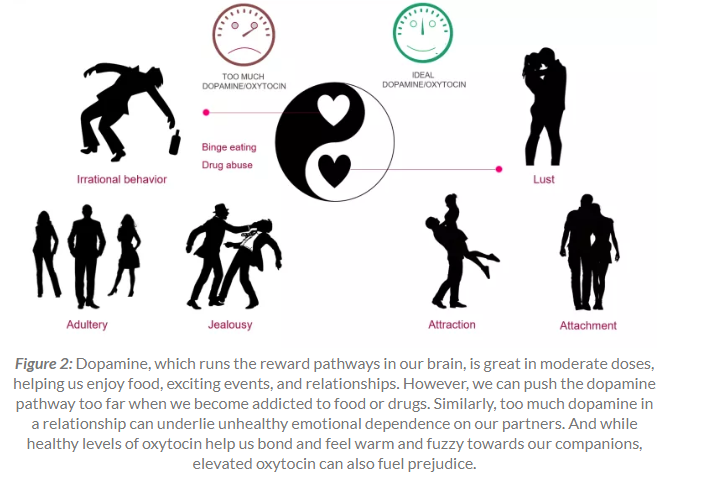Nothing comes close to the feeling of being in love: You see everything in a different light, the world is a better place, you can't wipe the smile of your face... The list is endless. It may surprise you to know that there are scientific reasons behind why your body reacts the way it does to being in love.
According to Dr. Helen Fisher, biological anthopologist and Visiting Research Professor at Rutgers University, romantic love can be broken down into three categories. Each category can be characterized by its own set of hormones, stemming from the hypothalamus section in the brain, which is a section that controls many vital functions such as emotion.
The three categories are 1. lust, 2. attraction and 3. attachment. Keep in mind that romance isn't so black and white, and there are gray areas where each category overlaps.

1. Lust Of the three chemical reactions listed, lust is by far the most physical.
The two basic hormones responsible for lust are Testosterone and Estrogen. While these terms are generally linked to their "assigned" sexes, the truth is, both hormones are located within men and women, however, testosterone is more powerful when it comes to lust. The Testosterone and Estrogen driven emotion derives from our need as a species to reproduce and pass on our genes to the next generation. Both chemicals are produced in the hypothalamus section of the brain and is responsible for the initial stage of falling in love.

2. Attraction
While this process uses two different hormones and has its distinct differences from lust, the two are closely related.
Lust and attraction go hand-in-hand and we can't have one without the other. Attraction is caused by the production of dopamine and norepinephrine, which are both created in the same section of the brain testosterone and estrogen are produced in. When people say they have "butterflies," this is what they are referring to. When we experience surges of dopamine, it gives off a high similar to the feeling felt when one has an addiction. Additionally, while the levels of dopamine and norepinephrine increase, our serotonin levels (which are responsible for our mood and appetite) decrease.

3. Attachment
During the final stage of falling in love, the bond between two individuals is strengthened.
The final stage of falling in love can be reached after two people experience both stages 1 and 2, and consists of two sub-stages, which are also hormones our body experiences during the process; these hormones are oxytocin and vasopressin.
Oxytocin is appropriately nicknamed the "cuddle hormone" and is a powerful hormone that is released by men and women and substantiates the bond between two people. It can be experienced when two people kiss and is also experienced between a mother and child during childbirth.

Figure 2 by Tito Adhikary
Love is made to be as simple as lust, attraction and attachment, but behind the scenes the process is pretty complicated and thanks to our hypothalamus, falling in love is a task that we don't even have to think about; it just happens.
References
Love, Actually: The Science Behind Lust, Attraction, and Companionship
http://sitn.hms.harvard.edu/flash/2017/love-actually-science-behind-lust-attraction-companionship/
Why We Fall in Love: The Science Of Love
https://examinedexistence.com/why-we-fall-in-love-the-science-of-love/